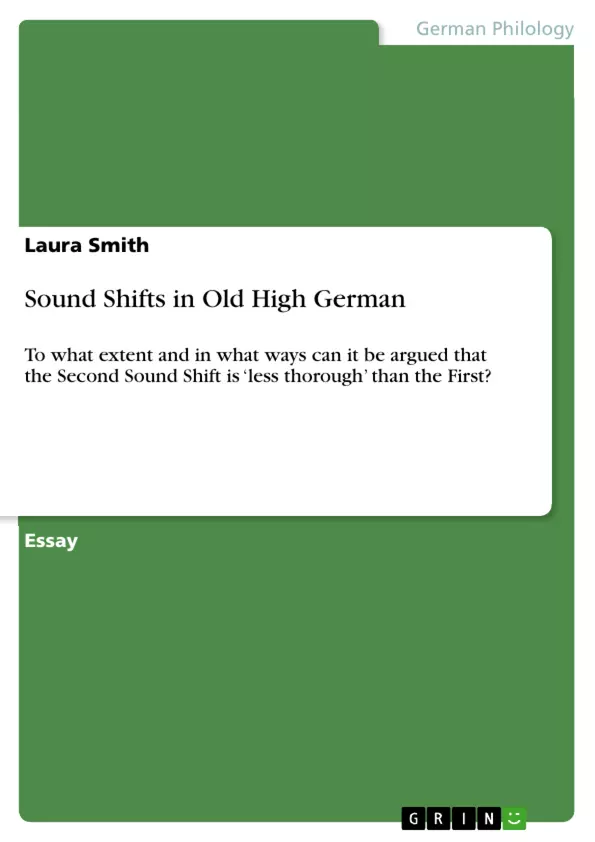The First and Second Sound Shifts are terms which refer to two series of consonant changes in the development of the Germanic forms from which Modern Standard German has evolved. In both cases the shifts affected stop consonants: the first resulted in the Germanic languages from Proto-Indo-European; the second in the Old High German dialects from the Germanic languages.
The First Sound Shift, also called the Germanic Sound Shift, Grimm’s law or die erste Lautverschiebung , affected all of the many stop consonants found in Proto-Indo-European; most changed, some disappeared but none escaped alteration. The dates are uncertain, but this shift is thought to have taken place from 1200 to 450 BC (“...not all of [the changes] were complete before the Germanic languages separated from each other” (Chambers & Wilkie 1970:18)). Though Rasmus Rask was the first person to discover them, Jakob Grimm was the first to tabulate and examine the changes in detail.
Table of Contents
- The First Sound Shift
- Voiced Stop Consonants
- Voiceless and Voiceless Aspirated Stops
- Voiced Aspirated Stops
- The Second Sound Shift
- 't'
- 'p'
- 'k'
- General Restrictions to above three shifts
- 'b'
- 'd'
- 'g'
Objectives and Key Themes
This text aims to provide a detailed account of the First and Second Sound Shifts in Germanic languages, focusing on their impact on the development of Modern Standard German. It examines the changes in stop consonants that occurred during these shifts, outlining the specific rules and exceptions that govern them. The text also explores various theories surrounding the causes of these shifts, including the potential influence of indigenous populations and the concept of linguistic evolution.
- The First Sound Shift (Germanic Sound Shift, Grimm's Law)
- The Second Sound Shift (High German Shift)
- The impact of the shifts on the development of German
- Theories concerning the causes of the shifts
- Geographical restrictions and dialectal variations
Chapter Summaries
The text begins by introducing the First Sound Shift, also known as Grimm's Law, which affected all stop consonants in Proto-Indo-European, resulting in the Germanic languages. It outlines the specific changes that occurred, including the shifting of voiced stops to voiceless equivalents, voiceless and voiceless aspirated stops to voiceless fricatives, and voiced aspirated stops to voiced stops or voiced velar fricatives. The text then discusses the Second Sound Shift, also known as the High German Shift, which distinguishes Old High German from its parent Proto-Germanic. This shift affected the consonants 't', 'p', and 'k' in specific contexts, leading to significant changes in pronunciation. The text also explores general restrictions that apply to both shifts, including the behavior of consonants in certain positions and the influence of preceding sounds.
Keywords
Proto-Indo-European, Germanic languages, Modern Standard German, First Sound Shift, Grimm's Law, Second Sound Shift, High German Shift, stop consonants, voiced stops, voiceless stops, aspirated stops, fricatives, geographical restrictions, dialectal variations, linguistic evolution.
- Arbeit zitieren
- Laura Smith (Autor:in), 2011, Sound Shifts in Old High German, München, GRIN Verlag, https://www.grin.com/document/298980



